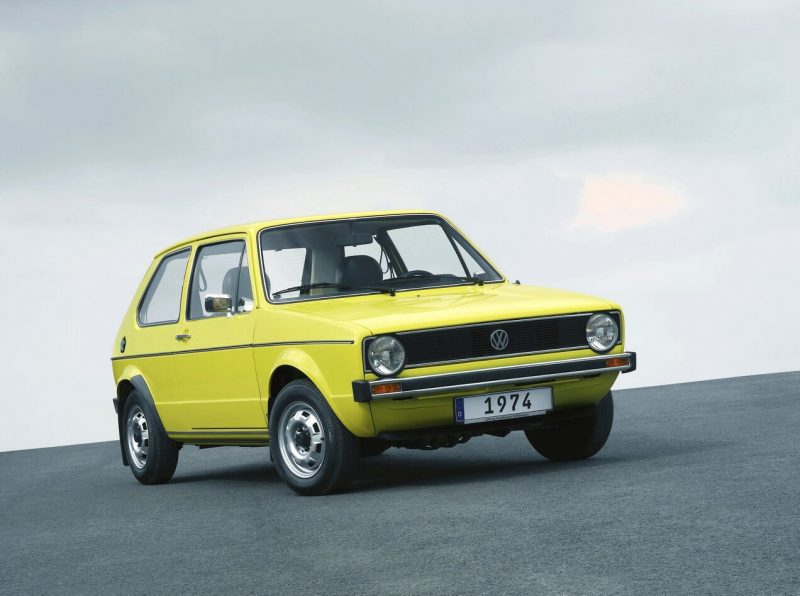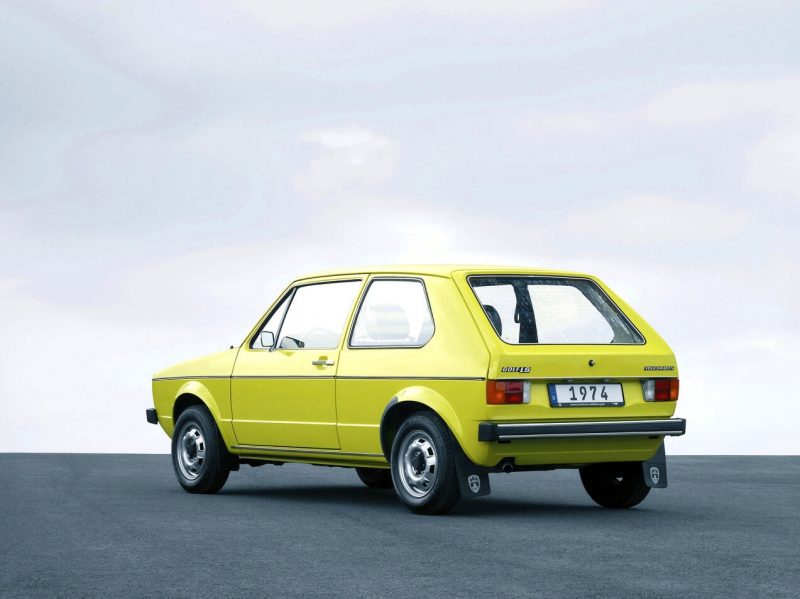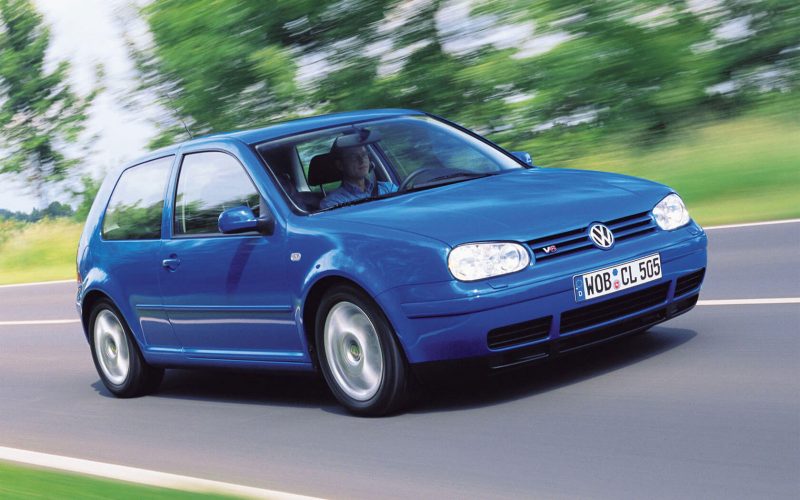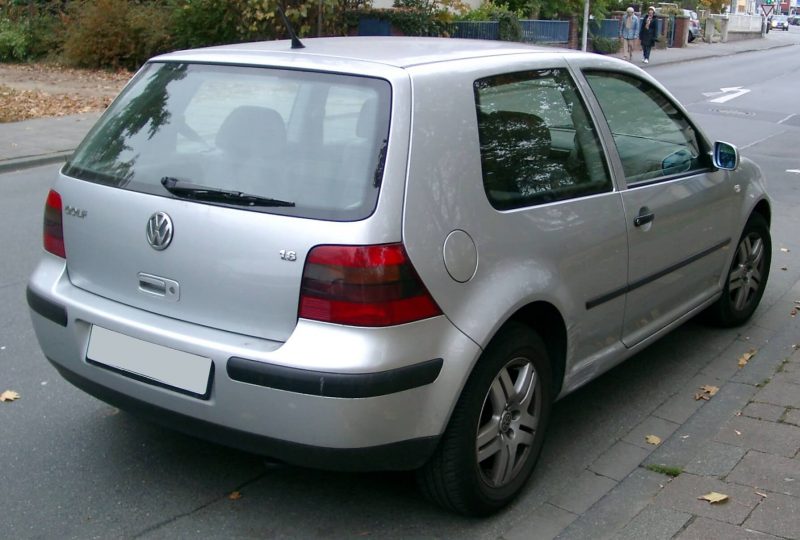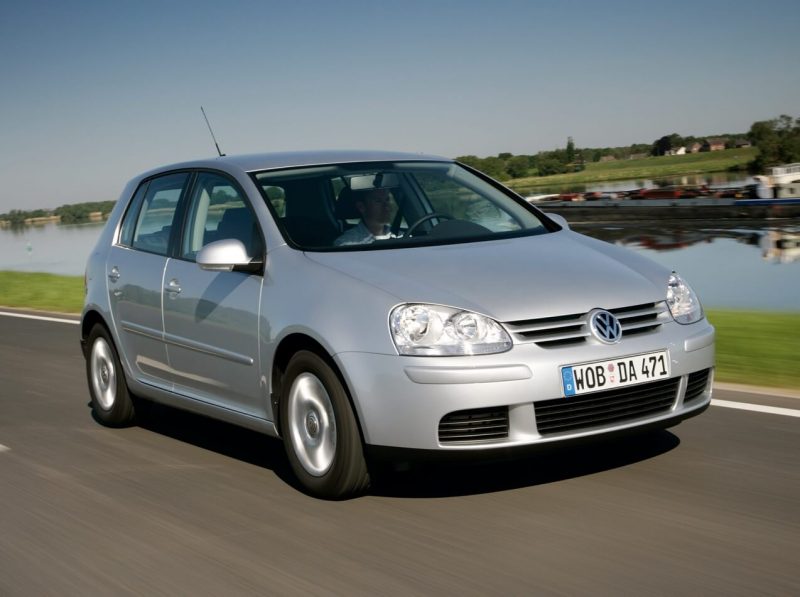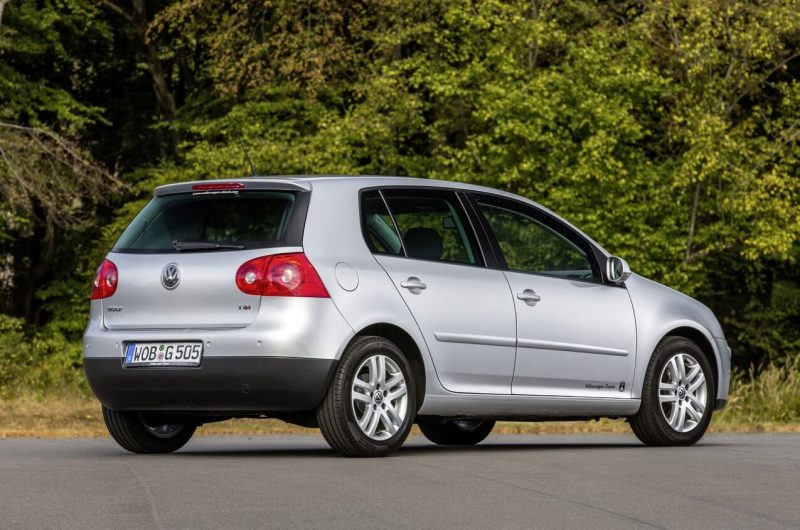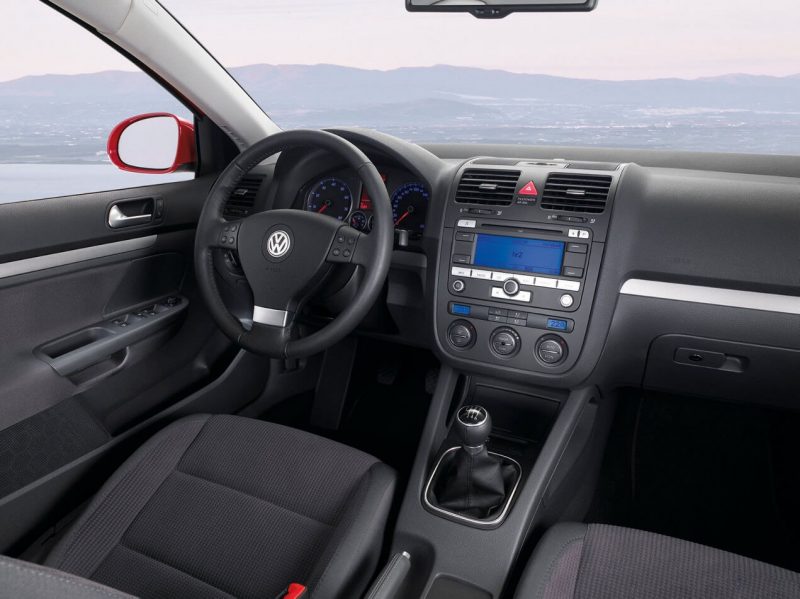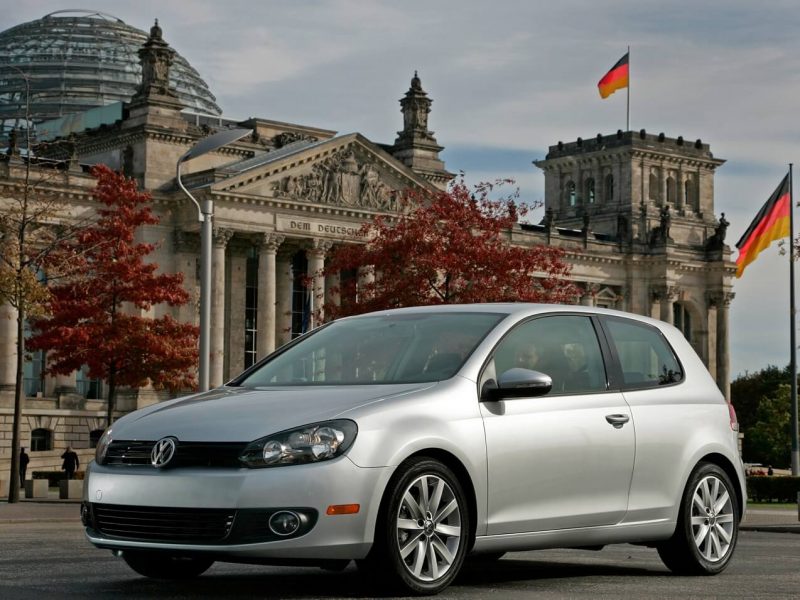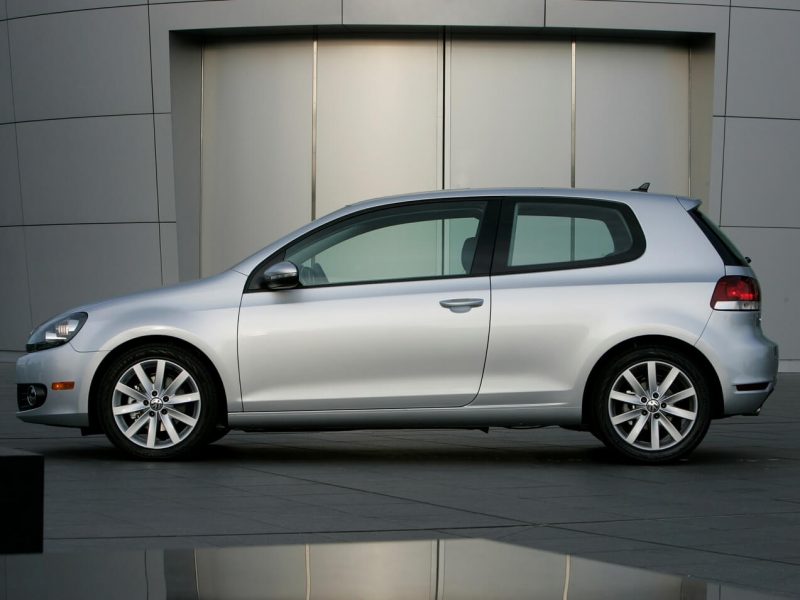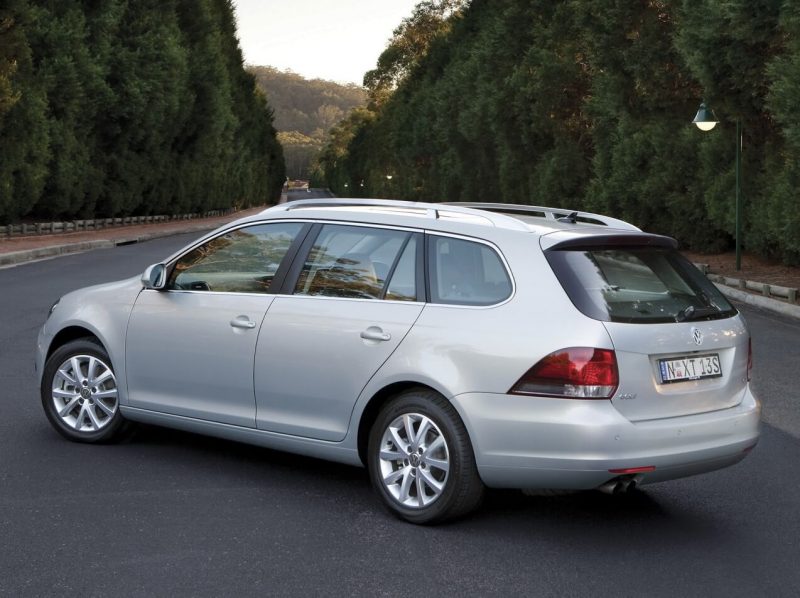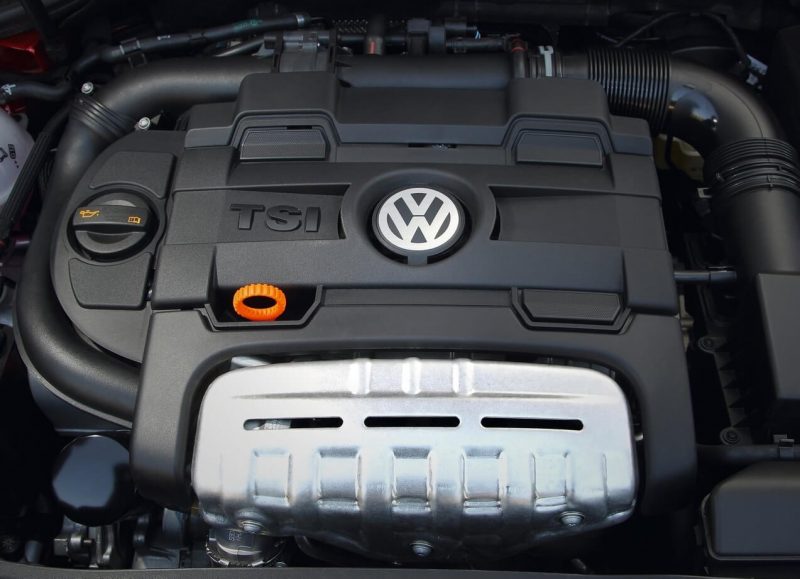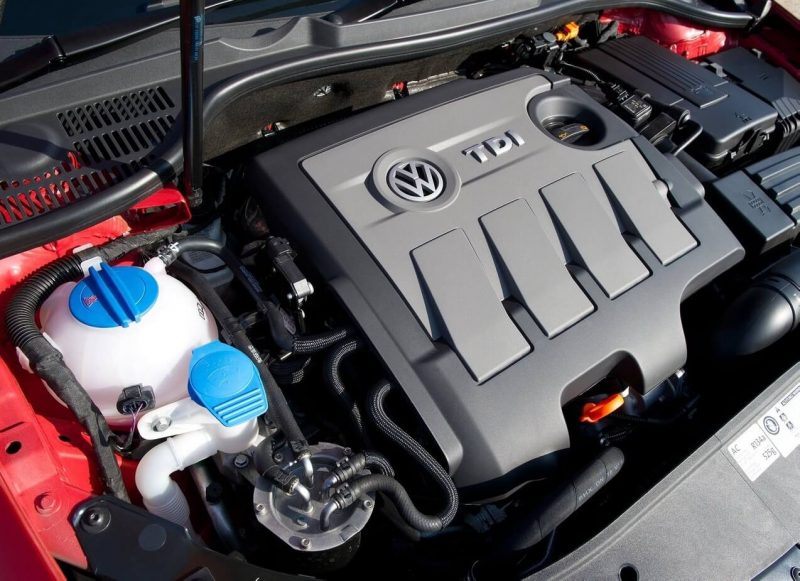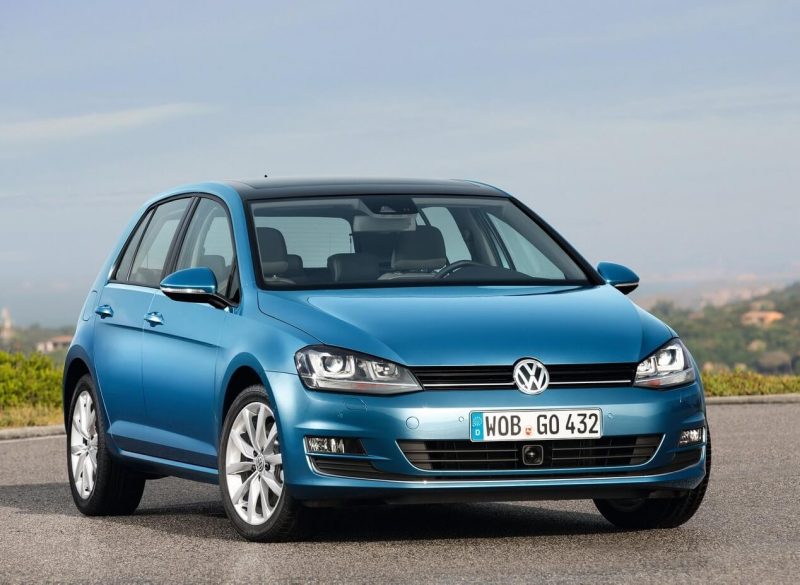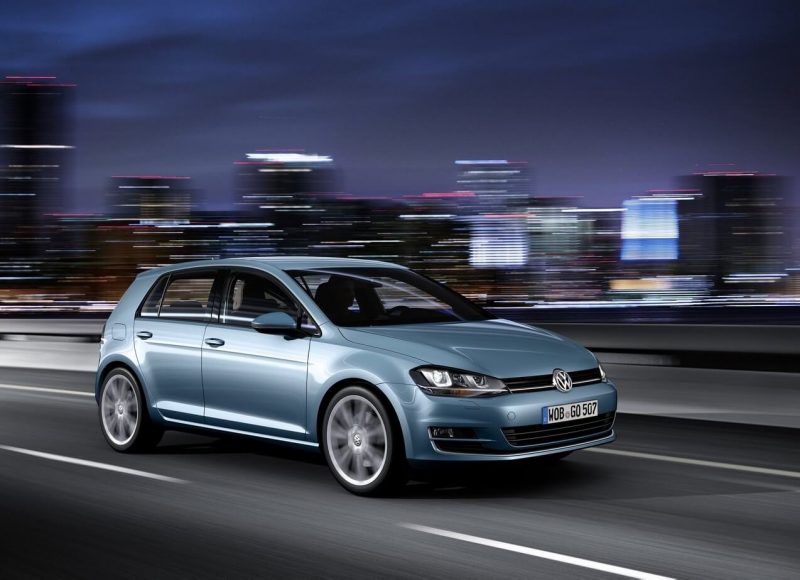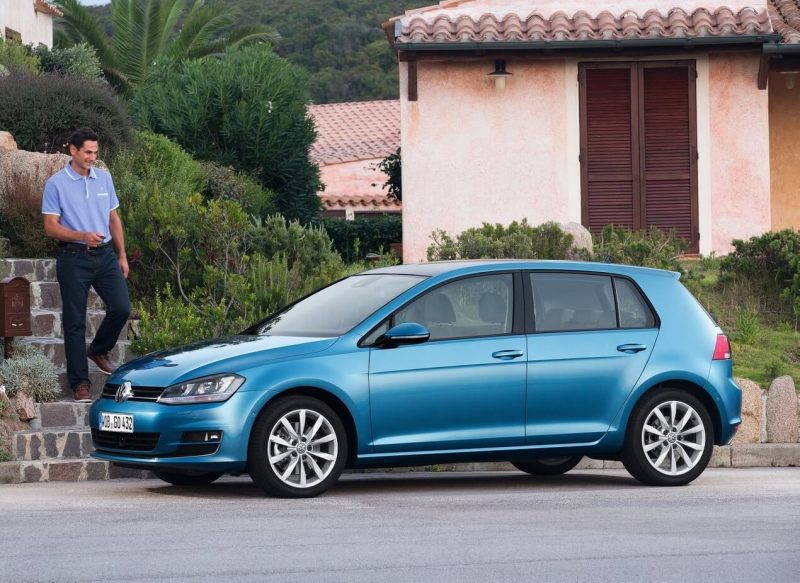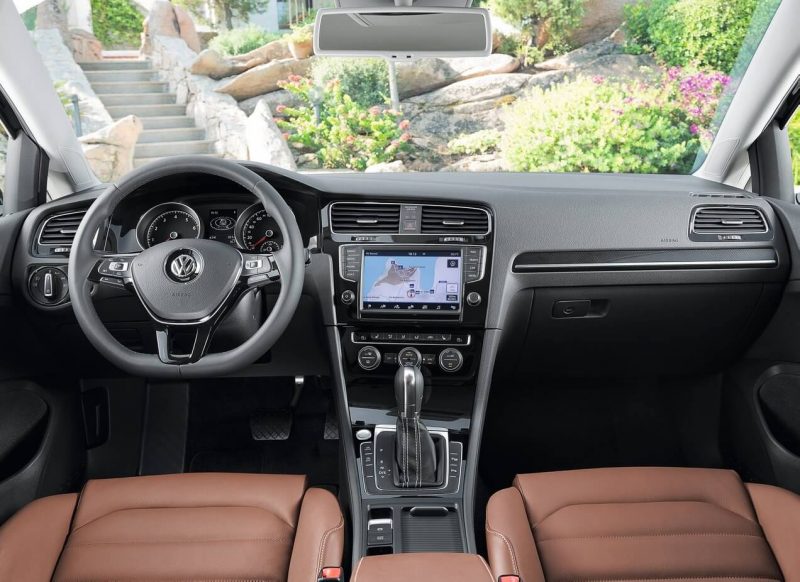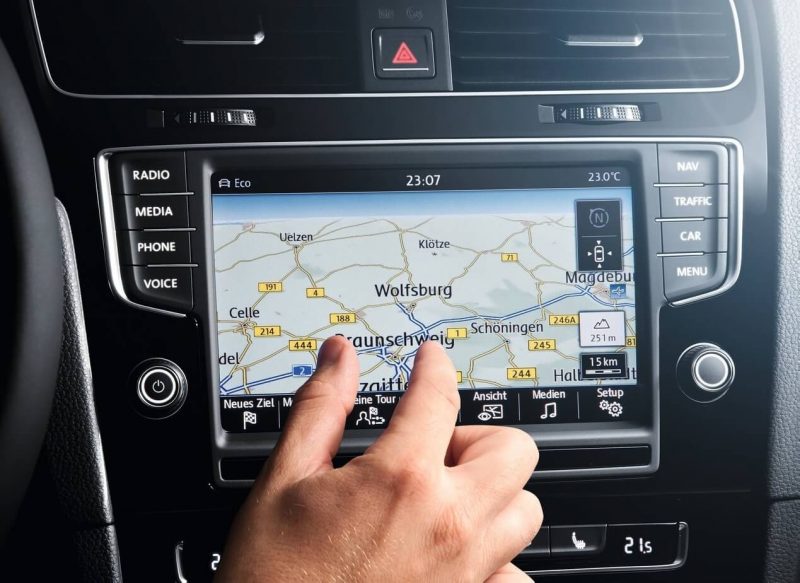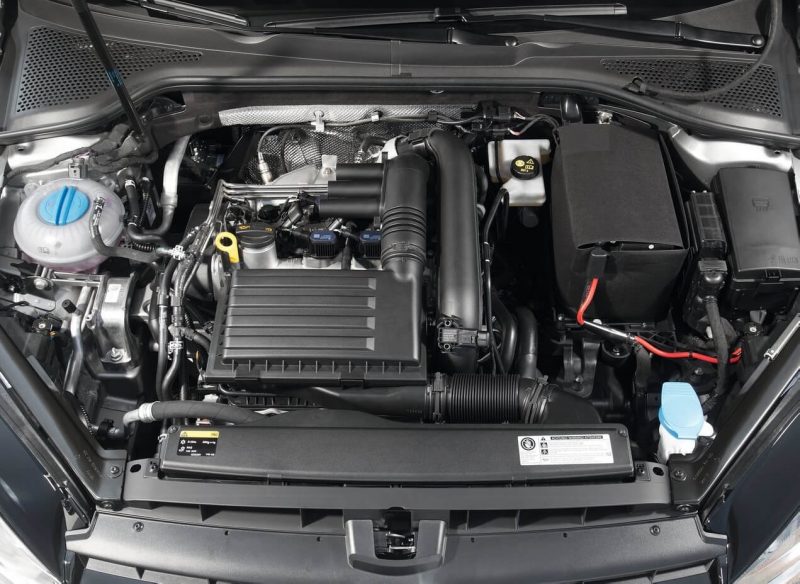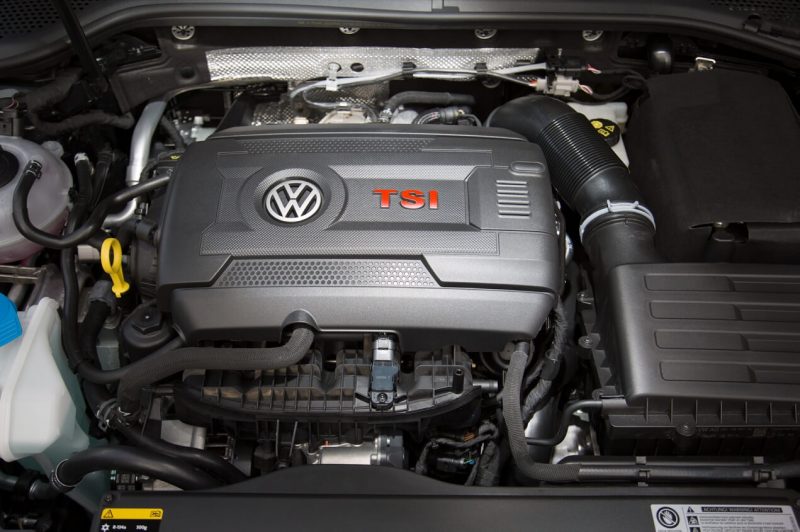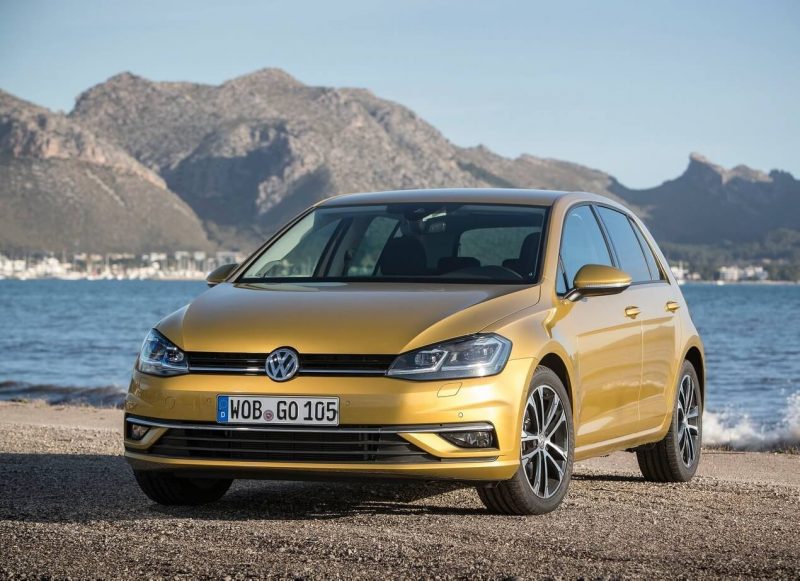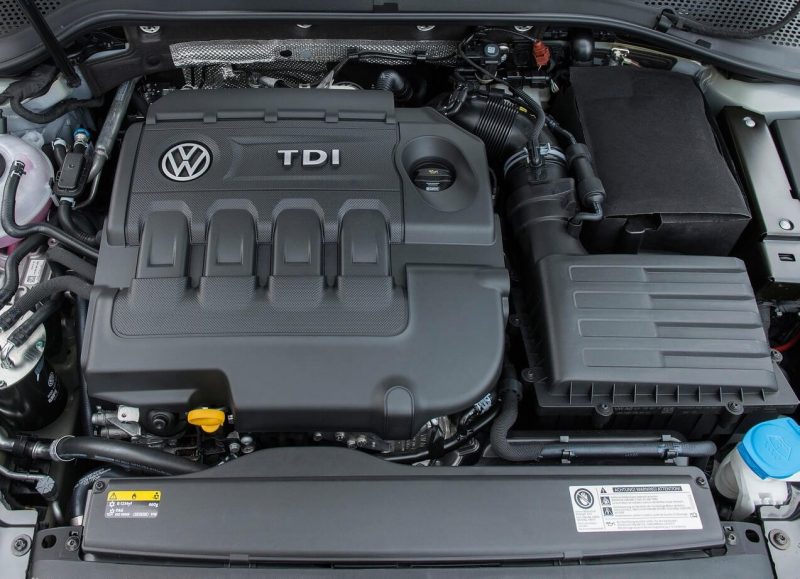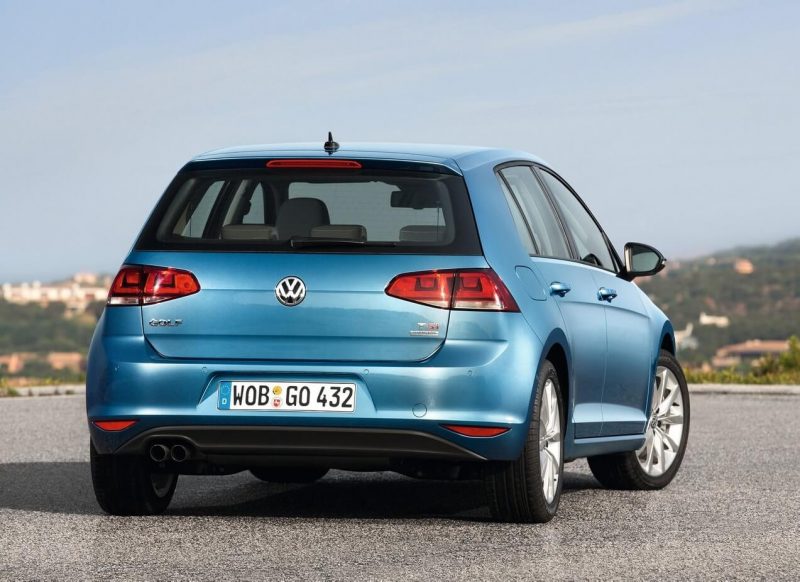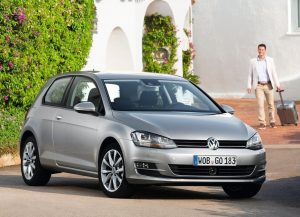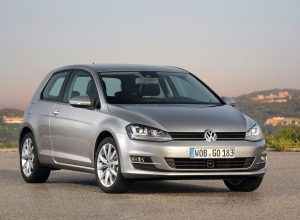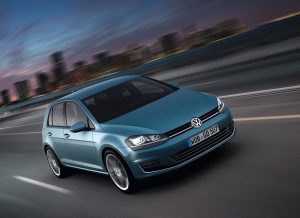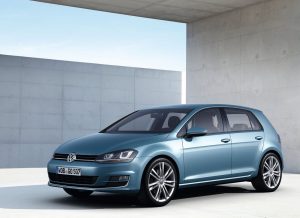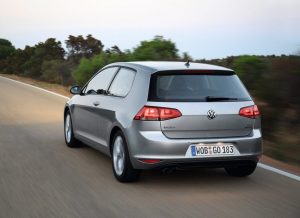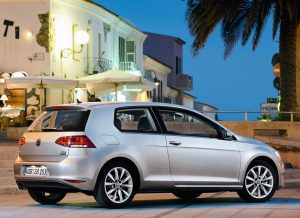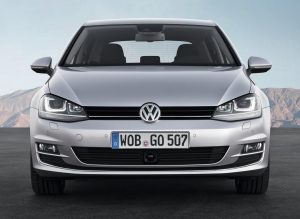Volkswagen Golf
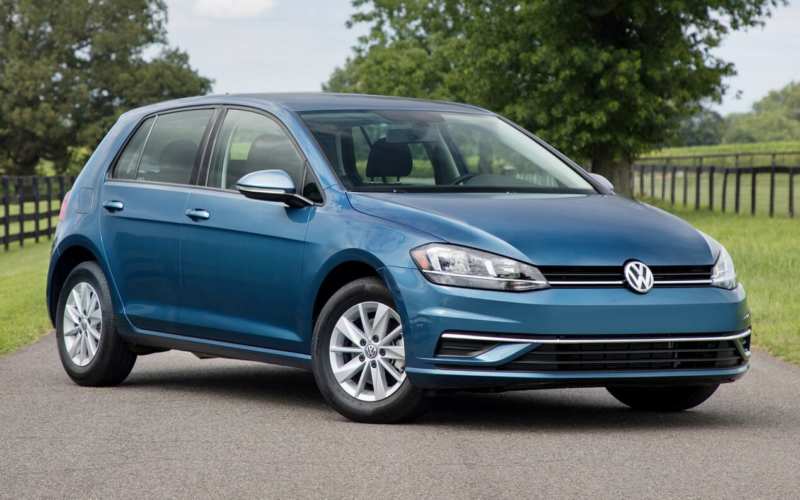

- Car model: Volkswagen
- Producing country: Germany
- Year of issue: 1974
- Body Type: Hatchback, Station Wagon
Volkswagen Golf is a product of the company Volkswagen, located in Germany. The popular hatchback became the most successful machine of the company and took the 3rd place between the best-selling vehicles. According to information for 2007, more than 25,000,000 copies were produced. The car is the flagship of purchases among European motorists.
The car is the founder of the golf class. Interestingly, it was recognized as the “Import car of the year in Japan” (2004-2005). At the beginning of 2013, the 7th family car was named the best car of the year in the World Car of the Year competition held every year. The whole model range is Volkswagen.
- Car history
- 1 generation – A1 (1974-1993)
- 2 generation – A2 (1983-1992)
- 3 generation – A3 (1991-2002)
- 4 generation – A4 (1997-2010)
- 5 generation – A5 (2003-2009)
- 6 generation – A6 (2009-2012)
- 7 generation – A7
- Exterior
- Interior
- Specifications
- Powertrain
- Transmission
- Suspension
- Steering wheel control
- Brake system
- Safety
- Crash test
- Volkswagen Golf 8
- Appearance
- Salon
- Specifications Golf 8
- The pros and cons
- We sum up
- Volkswagen Golf 7 photo
- Test drive
- Video overview
Car history
1 generation – A1 (1974-1993)
The famous vehicle made its public debut in 1974. Volkswagen Golf 1 received a special name in honor of the warm ocean current – the Gulf Stream. Modest finishing made of plastic, angular design solutions and average comfort were justified by the front-drive configuration (which was an extremely rare phenomenon at the time), a wide range of engines running on diesel fuel and gasoline, a choice of bodies (3- or 5-door hatchback, Jetta sedan and convertible).
The first generation had a rear window washer, a “wiper”, a sliding hatch in the roof, a closing gasoline tank cap and cast wheel rims. In the United States and Canada, the vehicle was manufactured under the name VW Rabbit. The design of Volkswagen Golf 1 was developed by Italian car designer Giorgetto Giugiaro.
The standard engine was a 1.1-litre powerplant producing 50 horsepower. A little later, a diesel version of the 50 hp 1.5 litre engine was installed. These engines could accelerate up to 90 km/h in 13.2 seconds, and the speed limit was 149 km/h.
The average fuel consumption was 8.6 litres for every 100 kilometres. The most powerful was the Golf GTI, where there was a power unit with a volume of 1.6 liters, which had a fuel injection system K-Jetronic and produced 110 “mare”. With this engine the car was accelerated to 183 km/h, and to overcome the first hundred kilometers per hour it took only 9 seconds.
The sports version of the model had a price tag of a small car and dynamism of a sports coupe. GTI differed by dark window frames, seats and steering wheel in a sporty style and wider overlays of wheel frames made of plastic.
Initially, those who bought the “Golf”, offered a car not only with a mechanically shifted transmission, but also with an automatic transmission. Already from the first generation the German car had a good enough equipment that allowed you to feel comfortable sitting at the wheel of a hatchback.
By 1979, the company introduced a new car Golf-Cabriolet, where there was a folding soft top. The bodywork was made by the well-known Karmann studio in Osnabrück. Cars in the body of the convertible decided to create before the design of the 3rd generation “Golf”. Partly, it happened because of the fact that the convertible of the 2nd family could not be produced.
A little later the convertible and sedan, which received its name Jetta, were added to the model grid. Production of hatchbacks was completed in 1983, convertibles were still produced until 1993. A total of 6,700,000 vehicles were produced in the Golf 1 family.
Despite the fact that the GTI version of “Golf” of the first generation was released in 1976, the international magazine “Sports Car International” was awarded it the 3rd place among the best cars of the eighties.
2 generation – A2 (1983-1992)
When 1983 came, Golf 1 was replaced by the 2nd family. The novelty was more extensive, acquired modern equipment, where was ABS, power steering and on-board computer. The length of Volkswagen Golf 2 grew by 300 mm, width – by 55 mm, so inside it became spacious and comfortable.
With the help of modernized body shape it was possible to reduce the air resistance from 0.42 to 0.34. The most important recognizable design elements were retained, but they were supplemented and improved.
After 3 years (1986) the all-wheel drive version of Syncro was released. The “charged” version of Volkswagen Golf G60 had a 1.8-liter power plant under the hood, which developed 160 horsepower. There was a mechanical type blower.
The second family was more generous on modifications. By 1984, many saw the auto GTI, where there were 8-valve engines, developing 112 “horses”. Since the beginning of 1990-1991, “off-road” model Volkswagen Golf Country, developed together with the company Steyr-Daimler-Purch, was produced. The Country differed from the standard all-wheel drive version of the car by 63 millimeters higher clearance and related elements.
The body, together with the Golf Syncro units, was placed on the frame, with the help of which the car got an increased clearance. In addition, there is a viscomfort in the rear axle drive, which automatically connects the rear wheels when the front wheels are stuck. However, the need for such a version was lower than planned – only 7,735 vehicles were produced. They produced 2 families of vehicles until 1992, and built a total of 6,300,000 units.
3 generation – A3 (1991-2002)
The third Golf family took its first steps in August 1991 at the Geneva Motor Show. The body was produced with a three-door and five-door hatchback, a version of the Golf Variant and a convertible. With the back of the sofa folded back, the trunk of the body got a volume of 1,425 liters.
The third generation got a special design solution, and inside it became more free space. There was an abundance of auxiliary equipment, such as ABS, electric seat heating, air conditioning, electric drive of seat back angle adjustment. They have not forgotten to install centralized lock control, electric regulation of external mirrors, options for preheating of power unit in winter, etc.
The arsenal of power units had 7 gasoline-powered engines (from 1.4 liters with a capacity of 60 horsepower to the sharp VR6 12V, 190 hp with a volume of 2.9 liters). There were diesel-powered engines (a pair of “atmosphericists”, 64/75 “horses”, respectively, and the only turbo engine that produced 90 “horses”).
All gasoline engines were equipped with neutralizers. The weakest engine got a volume of 1.4 liters, and the most powerful – 2.8 liters. The latter accelerated the car up to 225 km/h, and the first “hundred” took 7.6 seconds. The strongest variants were with four-stage automation, where there was an electro-hydraulic drive.
The box had two programs – economy and sports style of movement. All wheels received disc brakes, and the front wheels were ventilated. All models began to be equipped with servo power steering and braking systems.
By 1995 the original Golf with a 2.8-liter VR6 on board had appeared. The idea of the new engine was as follows: a standard V-shaped six-cylinder engine was taken and the angle between the two cylinders was changed by 15 degrees so that all pistons would be placed under one GBZ.
This allowed the engine to develop 172 horsepower. The version of the sedan body was called Vento. The development department was especially attentive to the issue of safety. There were easily crushed volumes, reinforced frames, integrated into the doors of the amplifiers.
In addition, the 3rd generation hatchback had an Airbag for the chauffeur and front passenger, a 170mm deformed steering column, a foam-coated “dashboard” and steel backrests. The German company has not forgotten to provide its customers with a 12-year corrosion guarantee. As a result, the third Golf spread out in the circulation of 4 800 000 vehicles, and the construction was completed in 1997.
4 generation – A4 (1997-2010)
Volkswagen Golf 4, produced in 1997, became longer, more solid and more comfortable. The interior now had a similar style of Passat, and offered a lot of additional features. The range of choice of power units has increased. There were turbo diesel, gasoline turbo engines, gasoline units with direct fuel injection system.
The list of engines has 6 gasoline and 3 diesel variations, the capacity of which varies from 68 to 180 “horses”. The most powerful model is the Golf R32, which has a 3.2-liter 238 hp engine, four-wheel drive system and preselektivnuyu box DSG.
Without radical changes, the design composition was able to make the hatchback more modern. Initially, non-standard light elements are striking. The combined glass hood hides a pair of massive dipped-beam and high beam headlights, as well as a pair of small round direction indicators, along with fog lights.
The aft part of the car has been significantly changed, the most important detail of which was now the rear roof rack, which has a bent shape and flows into the wing. They decided to use sound-absorbing materials and new engine and exhaust system fixing elements. Volkswagen Golf 4 received 4 degrees of equipment: Trendline, Comfortline, Highline and GTI.
I was very pleased with the list of basic equipment, where there is an ABS, front Airbag for driver and passenger, two side Airbags in the backs of the front seats, disc braking system with four wheels (ventilated in front), power steering with a variable gear ratio and force on the steering wheel, height-adjustable driver’s seat, dusty ventilation air filter, rear seat head restraints, bumper-painted rear seats and radiator grilles, as well as exterior rear-view mirrors.
If necessary, the central console can be operated with the installed navigation on the LCD screen. There are elements that were previously absent in cars of this class. For example, the rain sensor monitors the windscreen wipers to ensure that they work intensively. In Europe, the version of the sedan is called VW Bora. It was also produced there until 2006, and in Brazil it is still produced today.
Many car owners carry out a small tuning, especially for Volkswagen Golf 4 generation. It is enough to equip the model with new disks and a couple of aerodynamic dodgers, and the car will become a real sports car for men.
It turns out that the Germans did not miss the design of the model – it is really universal. It is possible to say that the fourth Golf is a kind of designer who can change under the style and character.
5 generation – A5 (2003-2009)
The year 2003 came, which was marked by the advent of the fifth generation of the machine. The car was produced in the back of a hatchback, a station wagon and a sedan called Jetta. Hatchback was presented in autumn (September) at the Frankfurt Motor Show. The vehicle was decided to build on the newest base, which formed the basis of Audi A3 of the 2nd family and Volkswagen Touran.
It turns out that the hatchback has acquired the presence of a multilever rear suspension, a new body, which increased the rigidity by 80 percent. Volkswagen Golf 5 increased in length by 57 millimeters (4,204 mm), width by 24 millimeters (1,759 mm) and height by 39 millimeters (1,483 mm).
Passengers sitting at the back could feel the addition in the free space, as the feet became much freer (by 65 mm), and the height of the ceiling increased by 24 millimeters. The size of the new product is almost equal to the first version of Passat, released in 1973. However, this is a consequence of modern changes – the car should be spacious, accommodate 5 people and several suitcases in the luggage compartment. The trunk has also increased in volume to 350 litres.
The appearance of the car has five main elements, where you can see the waist line, which passes under the side windows and rises up, a clear schedule of side windows, which form a single one. The presence of embossed sidewalls in the area of the stern racks and doors, inherent in the shape of the rear pillar, and the rapid line of the roof, which is curved at an angle, clearly stands out.
It’s easy to see the fresh look of the nose area, which has improved aerodynamics. Double round headlamps with transversely mounted direction indicators are in place, which, like Faeton, clearly “sharpen” to the central area of the “front”.
Above the headlamps the curved plane of the wings rises. Together with the hood and grille they draw a V-shaped style. The interior of the 5th generation is strict in the standard German style, but it is functional and ergonomic. Functional departments are separated brightly, all the keys, along with switches, are located on their own familiar places.
Any trifle, compared to the previous version, has been improved and improved. For example, the central console with its adjustments, decided to install higher, in order to increase their information content and ease of management. The design of the front seats has been fully updated – now they provide maximum comfort.
The fifth Golf is the first vehicle in its category, where you can optionally install seats with electric adjustable lumbar support, which operates in 4 modes (built into the seat), or with an independent heater.
In addition, it is possible to install a front passenger seat with a forward folding backrest. This makes it possible to lengthen the load area and transport larger loads. The fifth Golf has received some variations of engines and transmissions.
The diesel line is represented by two engines: 2 liters in volume and capacity of 140 “horses”, and also 1.9 liters and capacity of 105 horsepowers. The list of available gasoline engines is clearly larger: a 1.6 liter capacity of 102 horsepower, 1.4 liters of 75 “horses” and 1.6 liters of 115 horsepower. The Golf V is equipped with 1.4 TSI (maybe 3 units – 122, 140 and 170 hp) and 2.0 FSI (two variants – 150/200 “horses”).
The fifth family comes with three versions of standard equipment: Trendline, Comfortline and Sportline, which are characterized by small elements of finishing. Each has six airbags, ABS with Brake Assist and ESP. At the end of 2004, the VW Golf Plus single-volume hatchback was introduced, which was distinguished by a different design solution. A total of 3,300,000 vehicles had been produced by 2009.
6 generation – A6 (2009-2012)
He made his 6th generation debut at the Paris Motor Show in October 2008. The car was, in fact, a deeply modernized car of the previous family. For the appearance of the car was responsible Walter da Silva. The model was assembled in the body of a three-door and five-door hatchback, as well as a station wagon and convertible.
It so happened that the sixth generation came out when many countries began to introduce mandatory daytime running lights. The German company reacted perfectly. All versions of Golf had headlights with built-in daylight. Due to the fact that the front end was updated, the “six” looked more dynamic than its predecessor.
The universal model began to stand out among the rivals. Despite the fact that the volume of luggage compartment was slightly smaller than that of competitors, Golf did not allow to give up the position of a popular family car. Even the first glance at the VW Golf 6 allows us to confidently conclude that the novelty has become more elegant.
The optics in front of the vehicle, which is familiar to many people with the Sirocco concept, is now radically different. The headlamps on one side are of oval type, and on the other side they end with a sharp angle. The rear-mounted optics did not fail – the headlamp contours were painted in a unique and elegant way.
They’re a little like a VW Touareg SUV. Despite the fact that the body panels (besides the roof) were made from scratch, the 6th family did not turn out to be supernovae. It is still easy to perceive as an old acquaintance.
The bumper has a friendly smile, and relief edges have been drawn along the sides. And without that wide back rack made even wider. The window sill slightly fell, but the doors themselves, along with the doorways, did not change.
The soundproofing was very pleasing. It is not for nothing that the sixth generation is called the quietest in its segment. It was also possible to significantly increase the controllability, despite its already high level in the previous generation.
There’s not much change inside either. The new style looks like the top of a torpedo with door panels and a centre console. The instrument panel, three-spoke steering wheel, climate control and audio system control unit – these elements were migrated from VW Passat CC.
If before there was a lot of uncomfortable blue illumination, now it is gone. Instead, it was replaced by a white moonlight that looks more elegant and does not negatively affect the eyes. In general, the interior pleased with the materials of high quality: dark top, light bottom, beautifully made leather, literally gives everything thoroughness and goodness.
It feels like you’re in a higher class car. Of course, the basic equipment does not look so solid: the steering wheel has no leather braid and keys, audio recorder is simple, the rear doors are equipped with mechanical windows, and the seats are not so relief type, they are upholstered with gray or black fabric. Although, as we mentioned above, the luggage compartment has changed a bit, it is nice to have 4 convenient hook fasteners and a 12 V socket.
Speaking of power plants, there is a wide choice of power plants here. There are 7 gasoline and 3 diesel engines. Gasoline engines include a 1.4-litre 16-valve, 80-horsepower (since 2008), 1.6-litre 8-valve, 102-horsepower (since 2008), 1.2-litre TSI, producing 86 and 106 horsepower (since 2010), 1.4-litre TSI, producing 122 and 160 horsepower (since 2008).
Next come the versions of TSI with the same volume of 2.0 liters. The “weakest” sports model develops 211 horsepower and has been produced since 2009, followed by a 235-horsepower engine, which is produced in a limited edition for Golf GTI “Edition 35” since 2011, and closes the list of gasoline engine that gives 271 horsepower (produced since autumn 2009 for Golf R 2.0).
Diesel is a 1.6-liter TDI, which produces 90 and 105 “horses” (since 2009). There are also 2.0-litre versions of the TDI, which develop 110 and 140 horsepower (since 2008). The most powerful two-liter diesel engine has received 170 horsepower – it is produced since 2009.
The car’s arsenal has several triumphant features. This includes the all-wheel drive system 4MOTION. None of the competitors in the segment have anything like this. However, this is not an innovation, because the company has equipped a permanent four-wheel drive system with the model from the 2nd family.
The sixth version uses the presence of electro-hydraulic multi-disc clutch Haldex 4-th generation. The trucks were equipped with 5- or 6-speed gearbox on the mechanics. A large number of “Golfs” have “automatic”, where there is a double clutch DSG. Of course, the 6-speed version of the DSG with wet clutches per head is more reliable than the 7-speed box. Already after the 6th generation was released, there were 4 variants of suspension. In addition to the standard, it was planned to install a reinforced (for heavy loads), sports and adaptive ACC, where there were shock absorbers of variable rigidity.
The adaptive version has three modes of rigidity: comfortable, standard and sporty. The front suspension also differs. If previously steel levers were placed, which were transferred from the 5th family, then later they were replaced by aluminum ones. Which option is installed depends on the powertrain.
7 generation – A7
Volkswagen Golf 7 for the first time showed at the car showroom 2012 in Paris. Sell cars began neatly after the presentation. Very pleased that, despite the newest family of cars, the cost of its remains at the same level. The new family received a wide range of changes, which favorably affected the percentage of sales.
Of course, the seventh variation can not be called the best car in the segment, and the interior did not get plenty of space, and the suspension – a little bit hard, but the zest of this car in the “coherence” of all elements and the lack of decisive punctures.
Exterior
In November 2016, German specialists presented an upgraded version of their own bestseller – Golf 7. The model received cardinal changes in exterior – improved bumpers and lighting, changes in the cabin, upgraded engines and a new gearbox DSG.
Do not forget to install a set of electronic services, which are usually attributed to more status machines. Although the seventh generation does not aim to win the title of “work of art”, its advantage is the presence of balanced design and balanced proportions. Given this, it is impossible to say that the car is boring.
The front part has a rather aggressive look, in which the “frowning” of the headlights is captured (optionally it is possible to install a full-fledged LED headlights), a narrow band of grille and a “shaped” bumper. Looking at the hatchback from different sides, it is hard to reproach the designers.
The bumper, in principle, of a simple type, has rectangular foggles. The side part has relief sidewalls with laconic, but very stylish punctuation, clearly distinguished silhouette of arches of wheels, stylish lanterns from light-emitting diodes and accurately “molded” back bumper.
The designers introduced a stylish stamping line under the door opening handles. The rear-view mirrors were placed on the leg, but in reality it was something between the stand and the leg. The rear part was beautifully decorated. Some complain that the rear lights do not look as aggressive as the front ones. On the roof in front of us there is a spoiler, which is placed on a repeater of the stop-signal.
The stern bumper is quite massive – it has interesting shapes and reflectors. A plastic bumper is installed at the bottom of the bumper and the exhaust pipes are located below it. The seventh generation of “Golf” comes with two options – a 3-door or 5-door hatchback. The ground clearance is 160 millimeters.
Interior
Inside the “seventh” VW Golf there are some strict German elements, however, considering all this, the salon looks attractive and modern. Speaking about the quality of the performance, hatchback can “teach” many cars class above, because all the finishing materials, along with the assembly, at the highest level.
On the central console, unfolded to the driver, gracefully placed color display of infotainment system (diagonal can be from 6.5 to 9 inches), as well as a very simple and functional control unit climate system.
The multifunctional steering wheel is conveniently placed, cut under the sports style. The steering column can be adjusted in height and outreach. The eye is pleased with the presence of an informative dashboard, where there are a couple of large circles, which placed additional devices.
The top version of the machine has a 12.3-inch color screen, placed instead of an analog “board” of instruments. The lowest part of the centre console was given a niche for trifles.
The seventh generation of the Golf received the title “Car of the Year” and the corresponding WCOTY award at the time of its release.
The tunnel has a large transmission selector, around which there are buttons responsible for a variety of options. You can put the hatchback on the parking brake by pressing the button. To the right of it the niche with cupholders is set. Organization of the inner space of Golf 7 at a height.
On the front seats of the car there is a dense, optimum packing, there is a presence of the thought over profile with allocated lateral rollers of support, and also various ranges of adjustments.
The rear sofa was assembled qualitatively, and there is enough free space in all directions. 3 passengers will be able to sit down, but the person sitting in the middle will not be so comfortable, as there is a small tunnel under his feet. Despite the number of doors, reasonably assembled luggage compartment of the seventh generation has 380 liters of useful space.
If necessary, it is possible to add backrests of a back row in a proportion 40/60, then the volume to increase to 1 270 litres. Under the raised floor of the car is hidden full-size spare wheel and tools.
Specifications
Powertrain
Such a hatchback, despite its generation, always had a huge range of engines, so the 7th family is no exception. However, sadly, only 3 units have arrived in Russia from the rich range of various engines. The reasons are unknown. It would not be superfluous to mention that such engines are now installed on the new Passat B8.
The most “simple” engine is atmospheric, has a volume of 1.6 liters and the function of injection distribution. The gas distribution mechanism of DOHC type and 16 valves is installed. As a result, it develops 110 horsepower. This is enough to reach a mark of 100 km/h in 10 seconds.
The engine eats about 8 liters of power in urban mode, and 5 liters on a straight line. Some people do not recommend to buy such a motor, but it has its main advantage – reliability because of a rather simple design. Next comes a turbocharged 1.4-liter 125 hp engine, accelerating the compact hatchback 9 seconds to the first hundred. Maximalka is set at 204 kilometers per hour.
Today, many companies use turbochargers to save fuel in a quiet ride – it turns out that the engine consumes less than 7 liters of gasoline in urban mode, and in the countryside, this figure drops to 4.3 liters. Speaking of economy, the 1.4-liter engine is for you.
The line is completed by a similar 1.4-liter power pack, which already produces 150 “horses”. This TSI motor has a lightweight “winged metal” unit, direct “power supply” and adjustable timing. The torque was also increased by 50 values (250 Nm) to reduce acceleration to 8.2 seconds. The limiting speed is 204-216 km/h. This unit consumes no more than 5 liters in a mixed cycle.
Transmission
The 1.6-litre power pack is synchronised with a five-speed manual transmission or a 6-range automatic transmission. The 125 hp unit can be equipped with a six-speed “mechanics” or a 7-speed robotic gearbox DSG with a pair of clutches. The most powerful version is available only with the seven-stage DSG robot, also with two clutches.
Suspension
The seventh generation of Golf was built on the modular base of MQB, where there is a supporting body, the base of which consists of 80 percent high strength steel. The front axle has an independent suspension type McPherson, and the rear suspension has several options. If the engine is weaker, a semi-independent beam is installed when the engine is stronger – a multilever system.
Steering wheel control
The Volkswagen Golf 7 has a rack and pinion steering and an electromechanical amplifier with progressive efficiency.
Brake system
All wheels are equipped with disc brakes, where the front brakes are ventilated. The brake system works together with ABS, EBD, Brake Assist and other services.
Safety
Judging by the manufacturers’ statements, the safety level of the 7th family of “Golf” is the highest. These are not empty words – tests conducted in 2012 by Euro NCAP showed that the latest version of the machine deserves 5 stars. The car received 9 airbags, collision avoidance system at the back, as well as the ability of the car to automatically close the hatch and glass.
Adult safety is estimated at 94%, child safety at 94%, pedestrian safety at 65%, and support systems at 71%. Safety according to IIHS. The frontal test with a small overlap (25%) was rated good. Partial overlap frontal test (40%) was rated good.
The side crash test also got a good grade. The roof strength was rated as good. The safety of the head restraints was rated well. This is the best possible rating. There are only 4 of them: good (G), acceptable (A), weak (M) and poor (P)
Crash test
Complete sets and prices
There are a total of 3 options: Comfortline, R-Line and Highline. The cheapest car is estimated from $16978. Basic equipment is available:
- Tissue cladding;
- ABS, ESP;
- Eight airbags;
- Multi-rudder;
- Weak audio system with CD;
- Dual-zone climate control;
- Help start in the mountain;
- The gauge of pressure in wheels;
- Cooled box;
- Cruise control;
- Full electric package;
- Optical washers;
- Systems Start/Stop;
- AUX.
The most expensive equipment is estimated at $20017. Among other things, the car has xenon optics, fogproof optics and combined cladding. As a separate option there is a presence:
- Leather cladding;
- Control of blind spots;
- Luke;
- Navigation system;
- Rain and light sensors;
- Rear visibility cameras;
- Driver’s fatigue sensors;
- Keyless access;
- Launches with buttons;
- Systems of automatic parking;
- Two parktronicks;
- Adaptive cruise control;
- Prestarting heater.
Volkswagen Golf 8
Appearance
The new product will be available for purchase in 2017. The photos clearly show that the car has grown in the wheelbase. The car has a classic style. Thanks to the enlarged wheelbase it was possible to make a better layout of the free space inside the car. In addition to the expanded wheelbase, the updated model looks “sharper”.
The body lines, which are enough, now look sharper, especially when compared to the 7th generation. Lighting technique is also not similar to the usual one. Speaking in general, thanks to such innovations, the model has become aggressive and competes for the right to be the main.
Salon
As mentioned above, with the addition of a wheelbase, the engineers were able to bring in a little more interior details, which can be overlooked during a quick inspection. However, what is striking is the presence of a modernized multimedia complex.
Everything looks so perfect in the driver’s seat that there is no desire to leave the car. With the help of the software installed in the multimedia system, you can connect your smartphone to it, and then the information will be combined. The integrated display, which supports touch screen input, quickly provides access to the maps of the navigation system, which indicate the location of traffic jams that have formed at the time in the city.
The latest generation of “Golf” is the arsenal of innovative technologies that know how to save fuel, brake, park and start up on their own, recognize pedestrians and implement other options.
Specifications Golf 8
To create the 8th generation used an improved version of the MQB database, familiar to most drivers from vehicles such as Audi, Skoda and so on. Many people believe that the new model will be able to take its limits (200 horsepower or even 300).
The manufacturer provides for the availability of gasoline and diesel versions of engines. There are rumors that the appearance of hybrid “stuffing” is possible. Volkswagen Golf 8 is likely to appear by the end of 2017 and will cost from $15420.
The pros and cons
Pluses cars
- With each generation the car became more stylish and pleasant;
- Beautiful design;
- Small dimensions;
- There is a choice of power units and transmissions;
- New effective light optics;
- Good aerodynamic parameters;
- Excellent safety;
- Rich even base complete set;
- Good dynamics;
- Small fuel consumption;
- Pretty good noise isolation;
- Stylish interior;
- All elements are made qualitatively;
- Excellent ergonomics;
- Comfortable seats;
- Free space is enough, despite the fact that it is a hatchback;
- Top-of-the-range equipment comes with a colored dashboard instead of a mechanical version;
- The central console has a color touch-screen display that allows you to display the necessary information and navigation map on the screen;
- Pleasant work of the suspension;
- Pretty acceptable pricing policy of the company;
- Rich history;
- There are versions with full drive system;
- Rear backrests are folded up;
- Multifunctional steering wheel.
Cons of a car
- Small luggage compartment;
- A floor tunnel will interfere with the rear passenger in the centre;
- For the Russian market there are only 3 motor variants available;
- Many useful functions are only available for a fee.
We sum up
Volkswagen Golf has always been a beautiful and reliable machine, regardless of the generation. From the first release the model has successfully won the respect of many motorists all over the world. With each subsequent generation, this rating only increases. Hatchback is very convenient to use in the city limits because of its small size, sharpness and modest “appetite”.
On external design the car does not concede anything to its direct competitors. And if to speak about interior decoration, in some aspects it even surpasses. The whole interior is literally impregnated with qualitative assembly, high ergonomics and thought-out functionality.
Power units, although not the most powerful, allow you to go overtaking and ride up the mountain with confidence. The all-wheel drive system, which is present on some modifications, is worth nothing. It is important that Germans pay a lot of attention to ensuring the proper level of safety (7 generation received 5 maximum stars in European crash-tests).
All this testifies eloquently to the fact that the German company Volkswagen does not intend to sit idly by, but strives to constantly develop and keep pace with modern technology.
We advise you to read the article: Volkswagen History

